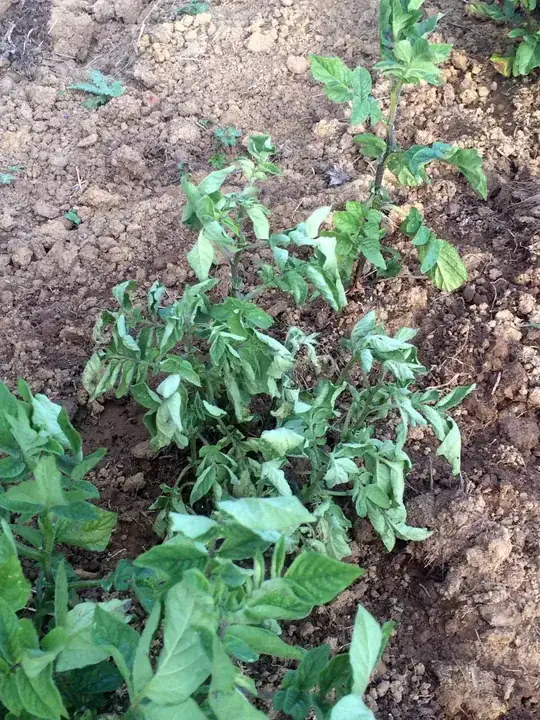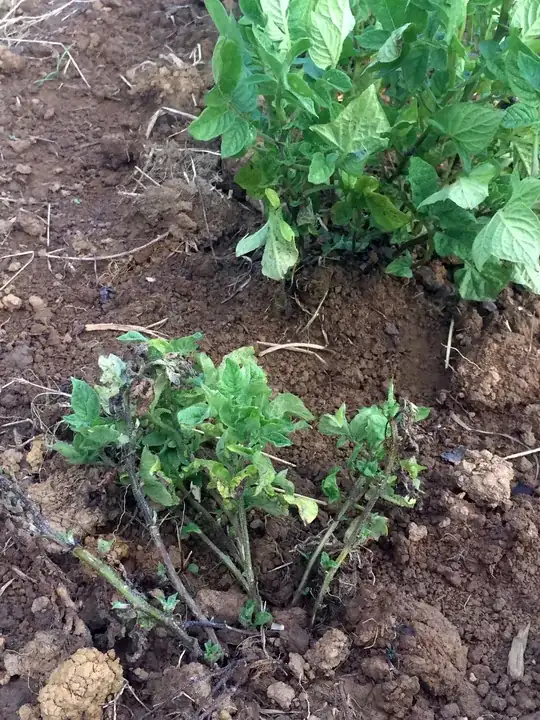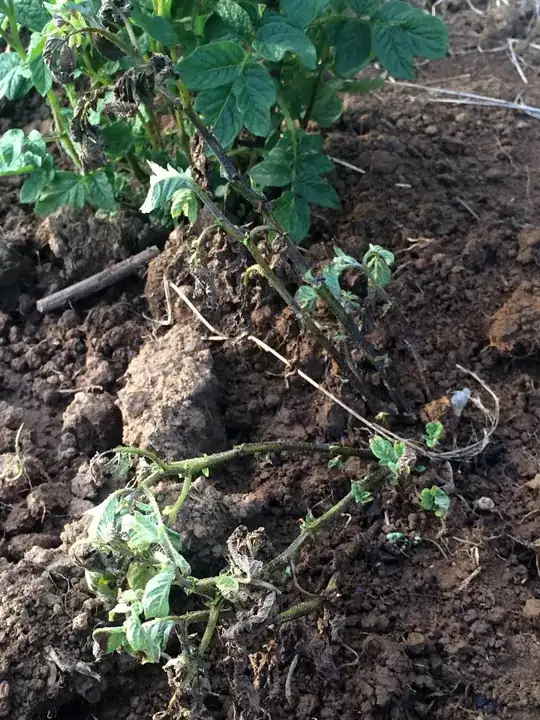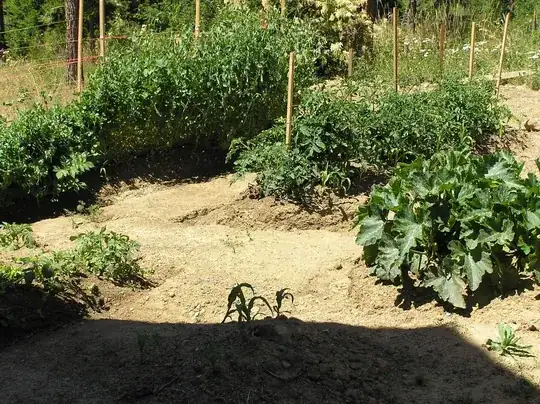We have a row of 3 different heirloom potato varieties, 50 originally, of which we've lost about 15 to a problem we'd like to identify.
The following photos show the start of the issue, through to a completely wilted and near dead plant over the course of about 3 to 7 days.
Neighbouring healthy plants don't appear to have the issue, which seems randomly placed along the row...
Some more info, hopefully helpful:
- Our region, north of the North Island of New Zealand, is currently experiencing very dry conditions. We've kept the plants well hydrated around every 3rd day, and while we have lost a couple to lack of water the result of that is more obvious (they dry up and die much faster and as a complete plant and the issue above often appears to affect half of the plant initially).
- The potatoes were planted later in the season than normally. The same varieties at another location nearby, but planted earlier, are thriving.
- No obvious caterpillars or insects on the plant or damage to the base.
- They've been fed liquid seaweed twice (as per recommended concentrations and duration between feeds).
- We've mounded once so far.
- We garden organically.
Any identification of the cause, tips for next year and/or remedy for this year greatly appreciated.
EDIT: We dug up some of the plants yesterday, the badly affected ones had slimey sacks left of their tubers, and interestingly none presented with a black insides. We also pulled out some that were only just on the turn, but their tubers appeared quite fine.




